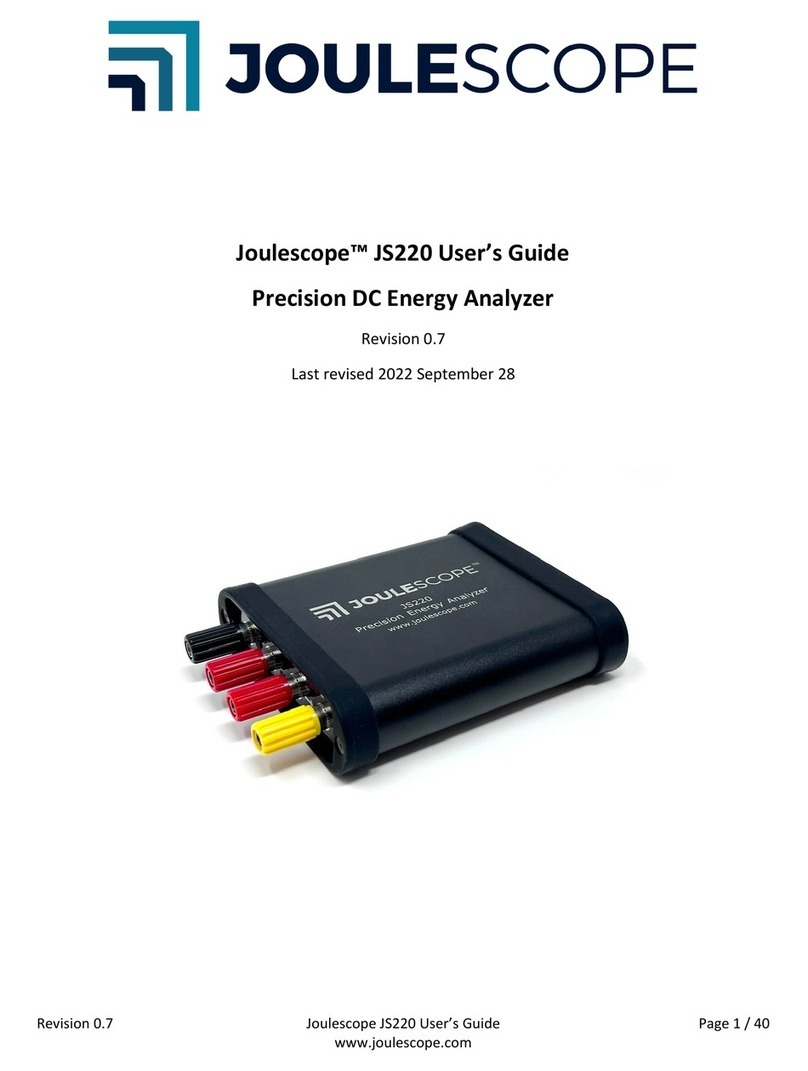Revision 1.0 Joulescope JS110 User’s Guide Page 5 / 42
www.joulescope.com
4. Table of contents
1. Affordable, easy-to-use, accurate and precise .....................................................................................2
2. Key benefits...........................................................................................................................................3
3. Key features ..........................................................................................................................................4
4. Table of contents ..................................................................................................................................5
5. What comes in the box.........................................................................................................................7
6. Meet Your Joulescope...........................................................................................................................8
7. Quick start.............................................................................................................................................9
8. Specifications ......................................................................................................................................11
8.1. Absolute maximum ratings.........................................................................................................11
8.2. Mechanical..................................................................................................................................11
8.3. Recommended operating conditions..........................................................................................11
8.4. Specification conditions..............................................................................................................11
8.5. Current measurement specifications..........................................................................................12
8.6. Voltage measurement specifications..........................................................................................12
8.7. General specifications.................................................................................................................12
8.8. Parasitic effects specifications....................................................................................................12
8.9. Software-controlled fuse specifications .....................................................................................12
8.10. General Purpose Inputs & Outputs.........................................................................................13
9. Host software......................................................................................................................................14
9.1. Installation ..................................................................................................................................14
9.1.1. Linux....................................................................................................................................14
9.1.2. Windows 7 ..........................................................................................................................14
9.1.3. macOS .................................................................................................................................14
9.2. Multimeter view .........................................................................................................................15
9.3. Oscilloscope view........................................................................................................................16
9.4. Energy and Charge......................................................................................................................19
9.5. Open-source................................................................................................................................19
10. Theory of operation........................................................................................................................21
10.1. Ammeter .................................................................................................................................21
10.2. Voltmeter................................................................................................................................22
10.3. Host Computer........................................................................................................................22
10.4. Power, Energy, Charge, and Statistics.....................................................................................22




























